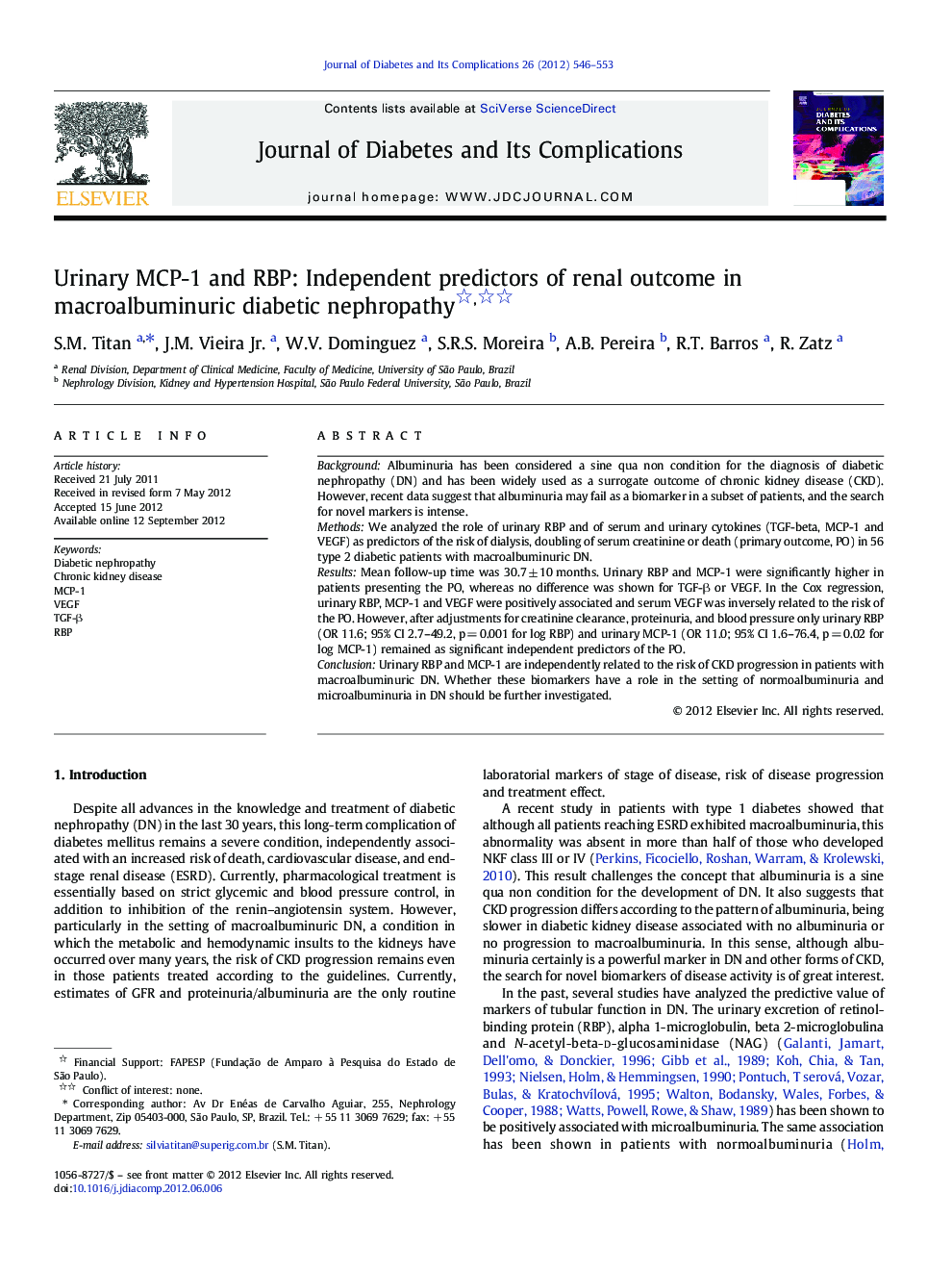| Article ID | Journal | Published Year | Pages | File Type |
|---|---|---|---|---|
| 2804479 | Journal of Diabetes and its Complications | 2012 | 8 Pages |
BackgroundAlbuminuria has been considered a sine qua non condition for the diagnosis of diabetic nephropathy (DN) and has been widely used as a surrogate outcome of chronic kidney disease (CKD). However, recent data suggest that albuminuria may fail as a biomarker in a subset of patients, and the search for novel markers is intense.MethodsWe analyzed the role of urinary RBP and of serum and urinary cytokines (TGF-beta, MCP-1 and VEGF) as predictors of the risk of dialysis, doubling of serum creatinine or death (primary outcome, PO) in 56 type 2 diabetic patients with macroalbuminuric DN.ResultsMean follow-up time was 30.7 ± 10 months. Urinary RBP and MCP-1 were significantly higher in patients presenting the PO, whereas no difference was shown for TGF-β or VEGF. In the Cox regression, urinary RBP, MCP-1 and VEGF were positively associated and serum VEGF was inversely related to the risk of the PO. However, after adjustments for creatinine clearance, proteinuria, and blood pressure only urinary RBP (OR 11.6; 95% CI 2.7–49.2, p = 0.001 for log RBP) and urinary MCP-1 (OR 11.0; 95% CI 1.6–76.4, p = 0.02 for log MCP-1) remained as significant independent predictors of the PO.ConclusionUrinary RBP and MCP-1 are independently related to the risk of CKD progression in patients with macroalbuminuric DN. Whether these biomarkers have a role in the setting of normoalbuminuria and microalbuminuria in DN should be further investigated.
